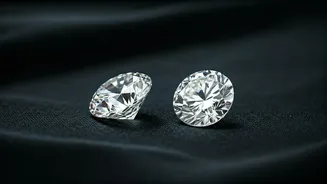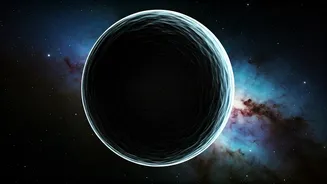The Sparkle Test
The initial impression often hinges on the sparkle. The way a diamond reflects light is a primary visual indicator, but it’s not foolproof. Both natural
and lab-grown diamonds can exhibit brilliance, fire, and scintillation. However, variations in cut, clarity, and other properties can impact the sparkle. Therefore, assessing sparkle alone isn't sufficient for differentiation; it serves as a preliminary observation. The brilliance is a function of the cut quality, while fire and scintillation reflect the internal properties of the stones. These factors must be considered together for a complete assessment.
Sparkle Inspection Tips
When assessing sparkle, look for a combination of brilliance, fire, and scintillation. Brilliance refers to the white light reflected from the diamond, fire is the dispersion of light into colors, and scintillation is the pattern of light and dark flashes. Inspect the diamond under various light conditions—natural sunlight, incandescent, and fluorescent. Examine how the diamond interacts with each light source. Compare how the light is reflected and whether the light appears uniform or with distinct patterns. Pay attention to how the facets are cut and aligned. A well-cut diamond will reflect light more effectively. Look for facets that are symmetrical, polished, and free from any irregularities, as this enhances the overall sparkle.
Price as a Clue
Price often provides a strong indication of a diamond's origin. Lab-grown diamonds generally cost less than natural diamonds. This is because the process to create them is less complex and has lower extraction costs than mining. When comparing prices, consider the carat weight, cut, clarity, and color (the 4 C's). Similar characteristics in both natural and lab-grown diamonds should show a price gap, where the lab-grown options are more affordable. This price difference arises from the supply chain and production costs. However, prices can fluctuate, so comparing prices from multiple sources is always advisable to make sure you have the latest market trends.
Certification Always Matters
Obtaining a certification from a reputable gemological laboratory is essential for verifying a diamond's authenticity and characteristics. These labs, like the Gemological Institute of America (GIA), provide detailed reports that include information on carat, cut, clarity, color, and origin. Certifications include a grading report that clearly states whether the diamond is natural or lab-grown, ensuring transparency. Review the certification carefully; it acts as a guarantee of the diamond's authenticity and provides a comprehensive assessment. It also helps in making an informed purchase, especially when purchasing expensive items where you would want confidence in the investment.
Natural Diamond Clarity
Natural diamonds often possess tiny imperfections, or inclusions, that formed during their creation deep within the Earth. The clarity grade, determined by gemological labs, assesses the number, size, and location of these inclusions. The clarity can range from flawless (FL), indicating no inclusions, to included (I), with noticeable imperfections visible to the naked eye. Inclusions in natural diamonds are frequently unique. The presence of these imperfections is a natural characteristic, and the overall clarity grade will affect the diamond's brilliance, fire, and value. The clarity grade significantly impacts the price, as clearer diamonds are rarer and more expensive.
Lab-Grown Diamond Clarity
Lab-grown diamonds, created in controlled laboratory environments, tend to have fewer inclusions than natural diamonds. The advanced methods used in their creation can create stones with fewer imperfections. However, they are still prone to some inclusions, although they tend to be different from those found in natural diamonds. The clarity grading process is similar to that of natural diamonds, with the grading reports issued by the same gemological labs. The clarity grades in lab-grown diamonds will still play a factor in the overall value and aesthetics. Because of the controlled environment, lab-grown diamonds can often achieve higher clarity grades with fewer visible inclusions.
Making Informed Choices
In order to choose between natural and lab-grown diamonds, it's essential to consider your priorities. If provenance and rarity are important, natural diamonds are the ideal option, because each stone has an unique origin. Lab-grown diamonds provide a cost-effective option while still offering excellent sparkle and beauty. When making your final decision, take the 4 C's (carat, cut, clarity, and color), the price, and any certifications into account. Always consult with a trusted jeweler who can provide expert guidance. Ultimately, the best choice depends on individual preferences and budget.










